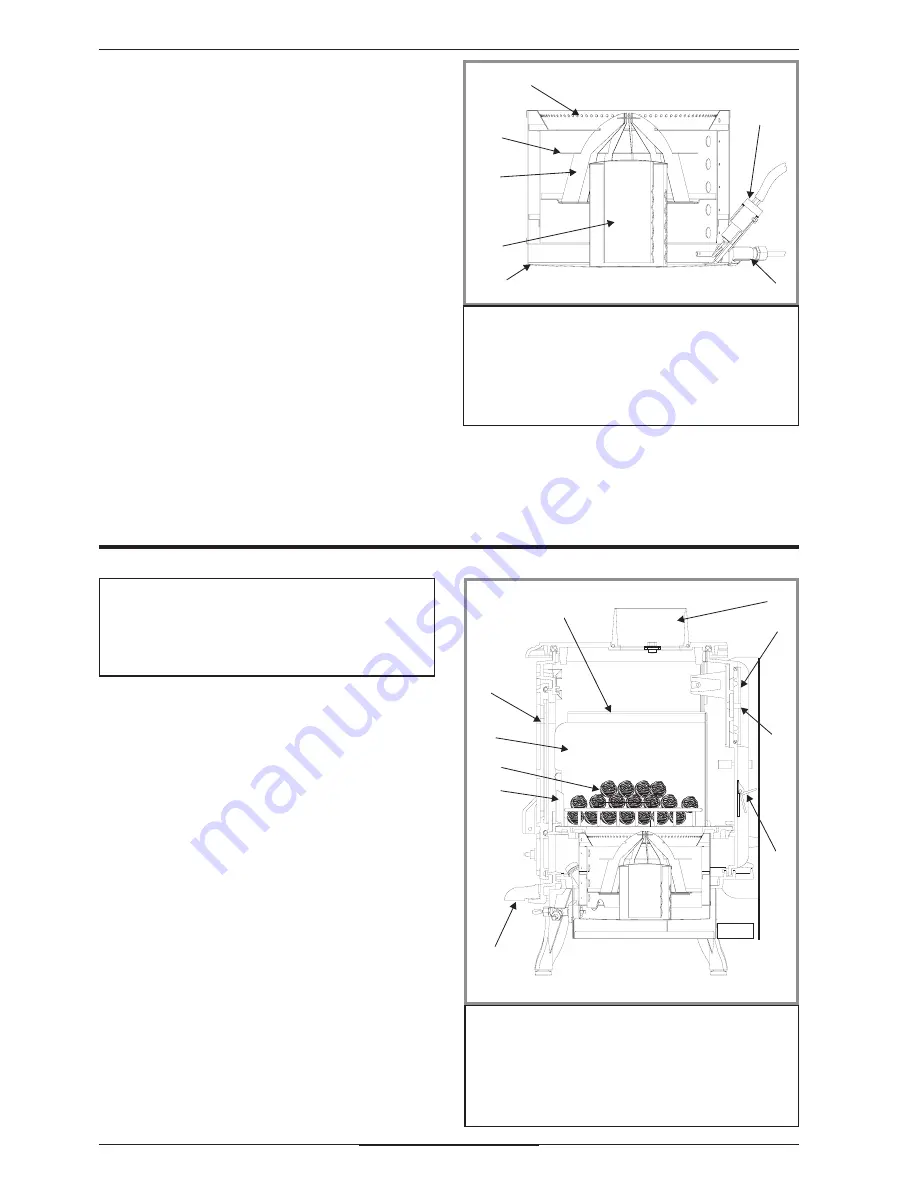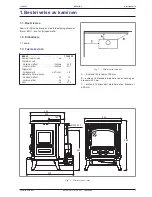
1.5. Operating principle
Furnace oil is fed to the burner floor (fig. 3) where is it
ignited by means of a firestarter (or the Glow-plug
ignitor # 6). The heat produced by this flame brings the
burner temperature to the required level to vaporize the
fuel. Oil will only burn as a vapour not a liquid.
Room combustion air enters the burner through the air
inlet holes.
In the center of the burner is the catalyser (# 4, fig. 3)
which aids in vaporizing the fuel. When the stove is
operation, the catalyser glows red. The stove should not
be used with out both the catalyser (# 4, fig. 3),
catalyser top (# 3) and ring (# 2).
A de-scaling lever (# 7, fig.3) can be pushed and pulled
in and out as well as turning slightly at the same time to
keep the inlet pipe clear of carbon buildup.
The stove float regulator contains a filter to trap
impurities.
A safety lever controls fuel flow. Oil can only enter the
float chamber when the safety lever is depressed.
Oil temperature variations will affect the oil flow into the
float chamber. A float in the chamber raises the fuel
level available to the burner.
The float regulator is also controlled by a control knob
which turns from “0" (off) to ”6" (high setting).
A draught regulator (# 1, fig. 12, p. 6) ensures a
constant air intake to the burner regardless of external
factors.
2. Installation instructions
SAFETY NOTICE : Read carefully all instructions before
starting the installation. If the stove is not properly instal-
led, a house fire may result. For your safety, follow the
installation directions. Contact local building or fire offi-
cials about restrictions and installation inspection in your
area.
2.1. Position of the unit
- The position of the appliance must be chosen very
carefully in order to obtain the best possible results for
heat distribution.
- Position the unit to comply with the minimum
c l e a r a n c e s t o c o m b u s t i b l e m a t e r i a l . M i n i m u m
clearances are shown from the vertical portion of the
chimney connector. Check that no overhead cross
members in the ceiling will be cut. Reposition unit if
necessary, being careful not to move closer than the
minimum clearances.
- Outside air : For the oil stove to function properly, an
adequate supply of combustion air is required.
2.2. Chimney
- Ensure that the flue has sufficient draught (refer to
technical details).
- Minimum flue diameter, 10 cm (4" I.D).
- The chimney must be at least 4.5 m (15 ft high).
- The flue must not be shared with any other appliance.
- Downdraughts caused by obstacles close to the
chimney top may sometimes be prevented by fitting an
anti-downdraught cap to the top of the chimney.
- The chimney must have a constant cross section. Too
large a flue could affect the chimney draught.
1
2
3
4
5
6
7
Figure 3 - Burner
1 - Air holes
2 - Upper ring
3 - Catalyser top
4 - Catalyser
5 - Burner
6 - Glow-plug ignitor
(optional)
7 - De-scaling lever
1
2
4
5
3
6
7
8
9
10
Figure 4 - Description
1 - Blanking plate
2 - Main door
3 - Flue collar
4 - Baffle
5 - Tray
6 - Sliding door
7 - Supplementary baffle
8 - Draught control
9 - Ceramic coal
10 - Coal support
Document n° 979-3 EN ~ 28/02/2000
174 05 05
BELFORT
Oil fired stove
4
Technical manual





































